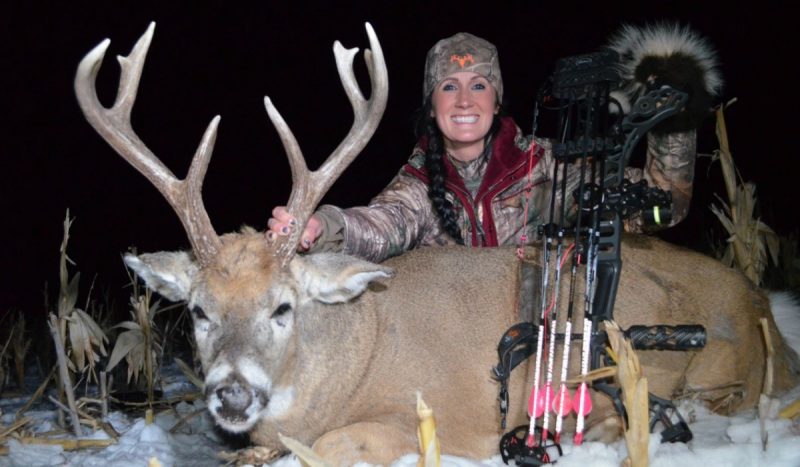Top 10 ‘Stay-Warm Hacks’ for Bowhunters
Melissa Bachman 12.29.17
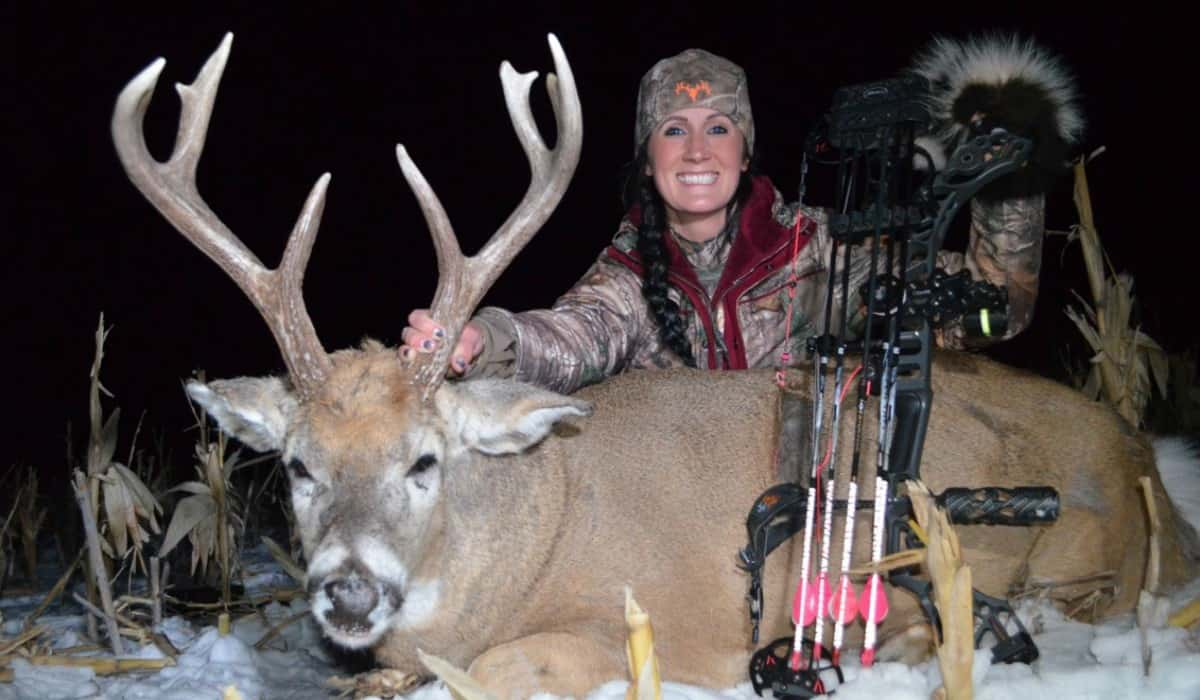
When it comes to late-season bowhunting, dressing for the weather can be downright difficult. The trick is to dress warm enough so you can sit on stand comfortably, but not get too bulky where it’s a challenge to draw your bow.
As a Minnesota girl, I’m pretty tough when it comes to cold weather. I know from experience that cold temps are often great for late-season deer hunting, but sometimes you need to find tricks to keep warm.
Over the years, I’ve come up with many solutions on my own, as I sit on stand freezing with only time on my hands. I’ve also watched and learned from others. Sometimes, I even expand on their ideas, and it has truly made a world of difference.
So, this is a compilation of the 10 best stay-warm hacks that I’ve put to the test over the years. Trust me — they work.
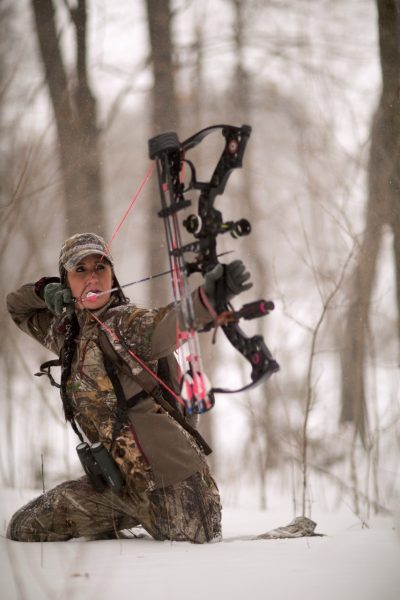
1. ThermaCare Wraps: If there is one product that has truly changed the way I hunt late season it has to be ThermaCare Wraps. This item can be purchased online at Walmart, Walgreens or many other stores or pharmacies. It was designed for people with back pain or arthritis, and is truly amazing for staying warm. They can be found in the pharmacy section with muscle relievers, icy hot, etc.
They have no scent and last for 16-plus hours, which means it can be put on in the morning and will last all day. I’ve even put them on up in Alaska sleeping on the tundra to stay warm throughout the cold nights in a tent.
ThermaCare Wraps are made to be placed right on your skin, so you don’t have to worry about getting burned, either. They kick off an even flow of heat all day, and come in three different forms. There is a large belt-style wrap that goes around your lower back and stomach. I place one of these directly on my skin; this helps keep my kidneys warm, which in turn keeps my entire body warm. They also make a version for your neck; it has sticky sides to keep it in place. Place this on your skin and combine with a neck gaiter over the top and you will immediately feel the benefits. Overall, you’re getting less bulk with warmth that truly lasts all day.
2. Wrist Wraps and Hand Muff: Cold hands can make any hunt uncomfortable, but the trouble with bowhunting is if you’re anything like me, you prefer a thin, lightweight glove. I don’t like having bulky gloves on either hand because it seems to mess with my grip, shot, everything.
So what do you do when the temps are below zero and a thin glove simply won’t cut it? I add either the ThermaCare Wraps or another heat source to my wrist. This keeps the blood warm as it travels to my fingers, and because it’s placed on my wrist, it doesn’t mess with my shot.
I also always have a hand muff strapped around my waist with a couple hot hand warmers inside. This allows me to keep my hands nice and toasty while waiting for a deer to step out, and it’s easy to access without worrying about dropping bulky gloves when the moment of truth comes. It may seem doable to quietly strip off thick gloves, but when a big buck steps in, what can go wrong usually does, so keep it as simple as possible. A hand muff secured around your waist can’t be dropped, but heavy gloves can!
3. Boot Blankets: Keeping your feet warm is another difficult task for many. I’ve purchased so many different boots hoping to find the perfect solution, and it’s difficult. What I do now is use the warmest boots I have, but then pair it with a set of boot blankets and a few hot hands. Boot blankets are made by a variety of companies; simply put, they are a big pillow that zips over your boots. I try to dry off my boots first if they’re covered in snow, then zip on my boot blankets. Once my boots are completely dry, I drop in a couple hot hands into the boot blankets (near the toe area), and I can last all day without my toes even feeling chilly.
4. Portable Heater: If you have a long day planned and the temps are going to be dreadfully cold, sometimes the best solution is to simply bring a portable heater. Growing up in central Minnesota, we always used heaters to ice fish, and also in our deer blinds. Many people are concerned about the scent and this can be an issue, but I’ve found if you just turn it on and off occasionally to cut the cold, it can make your sit much more comfortable. Most of these heaters have some sort of a handle and are quite compact, so I usually just strap it right to my backpack and keep it in the blind with me in case I need it. You will find if you’re trying to film your hunt that if the heater is on, then you’ll notice heat waves in the footage. Simply shut off the heater if you want to film, and use the heater only when necessary.
5. Heated Blanket: Having a heated blanket with me both in a treestand and in a ground blind has been a true game-changer. The crazy part is I sort of came up with this on accident. Pork Chop, my little Boston terrier that comes with me on almost all my hunts, doesn’t have much fur. Even with her cute little jackets, coats and booties, she can get cold. With this in mind, I figured there must be some sort of battery-operated heated blanket on the market. After doing a little research, I found one, and it’s been awesome. I charge the blanket at night, and it has both a high and low setting. I simply roll it up and strap it to my back. With her on my lap and this nice heated blanket, I rarely get cold, but now even when she stays home, the heated blanket usually makes the late-season trip as well — sorry Pork Chop!
6. Neck Gaiters, Hat and Hood: Keeping your face and head warm is extremely important for your long-term ability to stay warm. I personally like to wear one tight-fitting neck gaiter, then a fleece neck gaiter over the top which is a little looser. The reason for this is the lightweight, tight-fitting one always stays up over my nose. The fleece one does as well, but only until I’m ready to make a shot. Then, I lower the fleece gaiter down around my neck, and I can still feel my anchor point and can get a shot off without hitting anything. I also like to keep my hood up most of the time, and I’ll shoot with it up, too. Of course, a warm stocking hat is always a must, but the combination of all three of these items will help keep you very warm and your skin protected from the cold and wind.
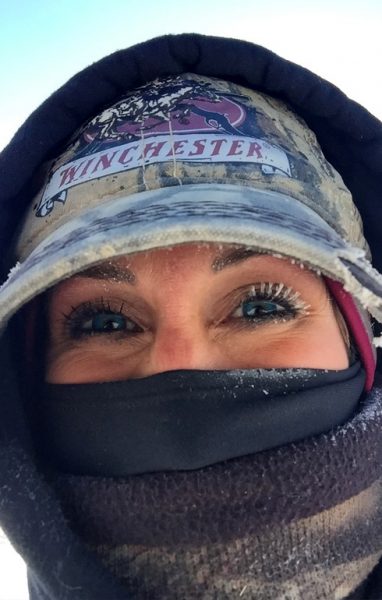
7. Hay: One of the best insulators I’ve found to use in ground blinds is something very simple — hay. It doesn’t spook deer and also helps out on scent. If I’m going to be hunting a late-season blind, I often go out beforehand and add hay both inside the blind all over the floor, and on the outside perimeter. The hay provides incredible insulation and keeps your blind much warmer simply by holding in your own body heat. And I must make a confession — it also makes it very comfortable if you decide to lay down and take a nap! Warning: Be careful if you plan to use a heater as well because the hay can make the floor very uneven, causing a heater to tip over easily and start things on fire.
Warm = Good. Fire = Bad.
8. Pack an Abundance of Food: I’m the type of person who always has snacks and a big lunch in the field. I spend so much time on stand and in blinds that I’ve learned always having enough food is essential. When it comes to late season, however, burning calories and constantly eating will help your body stay warm as well, so take a few extra minutes and throw in an extra sandwich and snacks before heading out.
9. Get Enough Sleep: I’m not sure if it’s a scientific fact or not, but I’ve done enough field research to tell you that when you’re dead tired, you get cold much quicker. Unfortunately, I’ve been in this situation one too many times. Staying well rested will not only keep you warmer, but you’ll also have a much more comfortable sit if you’re not constantly battling to stay awake.
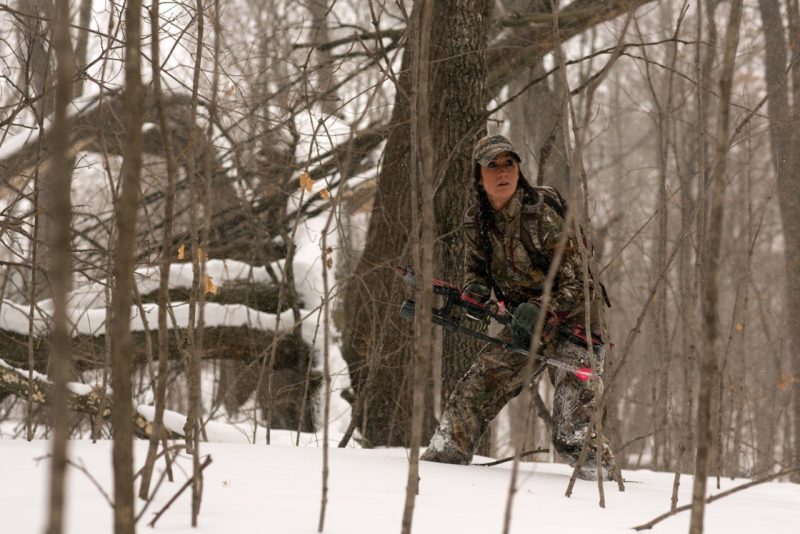
10. Layer Up So You Don’t Sweat Walking In: You can follow all these tips to help you stay warm, but if you dress too warm for your walk in and sweat, then it will all quickly go down the drain. Learn to layer up and strap your heavy coat and bibs to the outside of your pack for the hike into your stand. By doing this, you may be cold when you start, but by the time you arrive to your stand location, you can easily add on the extras and get set up without being soaked in sweat. One thing I do know for sure is if you get really sweaty on a walk in, it won’t be long and you’ll be freezing!
Regardless of what you decide to wear or use, one last piece of advice I want to stress is to get outside and take some practice shots in your gear. Find out if anything gets in the way of your anchor point. Try shooting from a sitting position like you may be on stand to ensure you can still smoothly and easily draw your bow. Also, ensure your sleeves don’t contact your bowstring after the release. If they do, put some sort of arm guard over your jacket to compress that bulk down to a manageable size.
Cold December and January bowhunting can be hot if you dress correctly; good luck!
